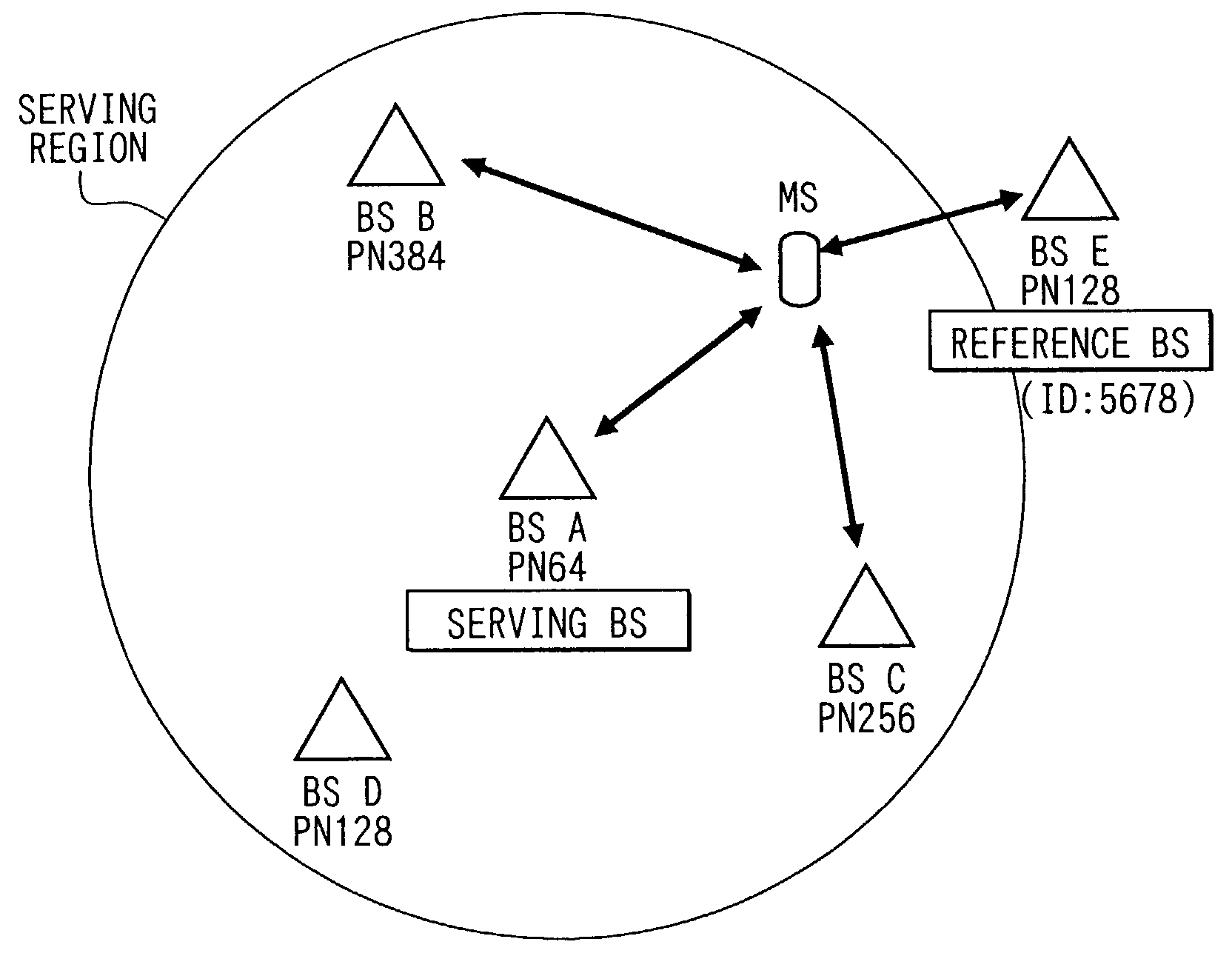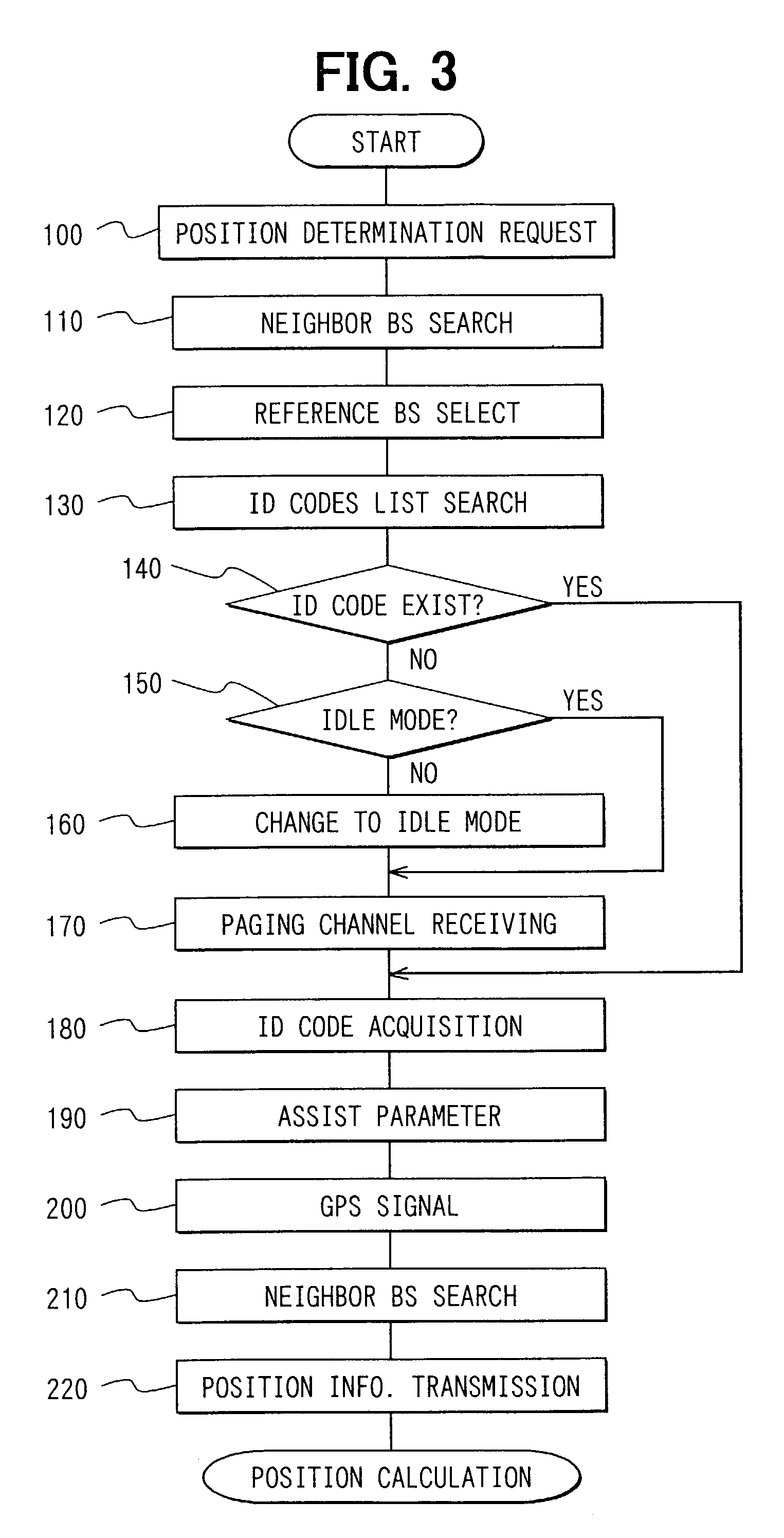Mobile communications terminal with position determination
a mobile communication terminal and position determination technology, applied in the field of mobile communications terminals, can solve the problems of erroneous position calculation, terminal does not execute complex calculations, and cannot determine the correct reference base station from the plural base stations with the same pn offs
- Summary
- Abstract
- Description
- Claims
- Application Information
AI Technical Summary
Benefits of technology
Problems solved by technology
Method used
Image
Examples
first embodiment
[0030]Referring to FIG. 1, a mobile terminal MS communicates with respective base stations BS that are connected to a CDMA network. A position server PSV is connected to the CDMA network. The position server PSV executes a position calculation based on position information from the mobile terminal MS. The respective base stations BS and the position server PSV receive signals from GPS satellites (hereinafter GPS signals) and synchronize system clocks thereof with the GPS signals. The mobile terminal MS is able to receive the GPS signals when needed and transmits the received GPS signals to the position server PSV via the network as position information for calculating a position thereof.
[0031]As shown in FIG. 2, the mobile terminal MS includes a CDMA antenna 1, a CDMA radio communicator (a receiver and a transmitter) 2, a GPS antenna 3, a GPS signals receiver 4, a speaker 5, a microphone 6, a voice controller 7, a key operation portion 8, a display 9, a memory 10 and a control unit ...
second embodiment
[0050]In the second embodiment, a reference base station is determined as the same base station as a serving base station. Specifically, when the mobile terminal MS determines the reference base station, the PN offset of the serving base station corresponding to a communication target base station is transmitted to a position server PSV as a PN offset of the reference base station instead of a PN offset of the base station having the shortest signal delay time in a neighbor list.
[0051]This is described with reference to FIGS. 6 and 7. In FIG. 6, first, position determination request is determined at 300. At 310, the mobile terminal MS then selects the PN offset (PN 128) of the serving base station E corresponding to the communication target base station as the PN offset of the reference base station. At 320, the selected PN offset of the reference base station is transmitted to the position server PSV.
[0052]Successively, as mentioned in the first embodiment, processing at 190 throug...
third embodiment
[0055]In the third embodiment, as with the second embodiment, a reference base station is also determined to be the same base station as a serving base station. However, the present embodiment differs from the second embodiment as follows.
[0056]In the present embodiment, when a reference base station has already been determined by an identification code, the identification code of the reference base station is included in position information and transmitted to the position server as an identification code of the serving base station. That is, in this case, a communication target base station may not be selected as the serving base station.
[0057]In an example in FIG. 9, the identification code (ID: 5678) of the reference base station E (PN 128), which is known to a mobile terminal MS, is transmitted to the position server at 190 and 220 in FIG. 3. Other processing is executed the same as in FIG. 3.
[0058]Accordingly, the position server can determine the reference base station becaus...
PUM
 Login to View More
Login to View More Abstract
Description
Claims
Application Information
 Login to View More
Login to View More - R&D
- Intellectual Property
- Life Sciences
- Materials
- Tech Scout
- Unparalleled Data Quality
- Higher Quality Content
- 60% Fewer Hallucinations
Browse by: Latest US Patents, China's latest patents, Technical Efficacy Thesaurus, Application Domain, Technology Topic, Popular Technical Reports.
© 2025 PatSnap. All rights reserved.Legal|Privacy policy|Modern Slavery Act Transparency Statement|Sitemap|About US| Contact US: help@patsnap.com



